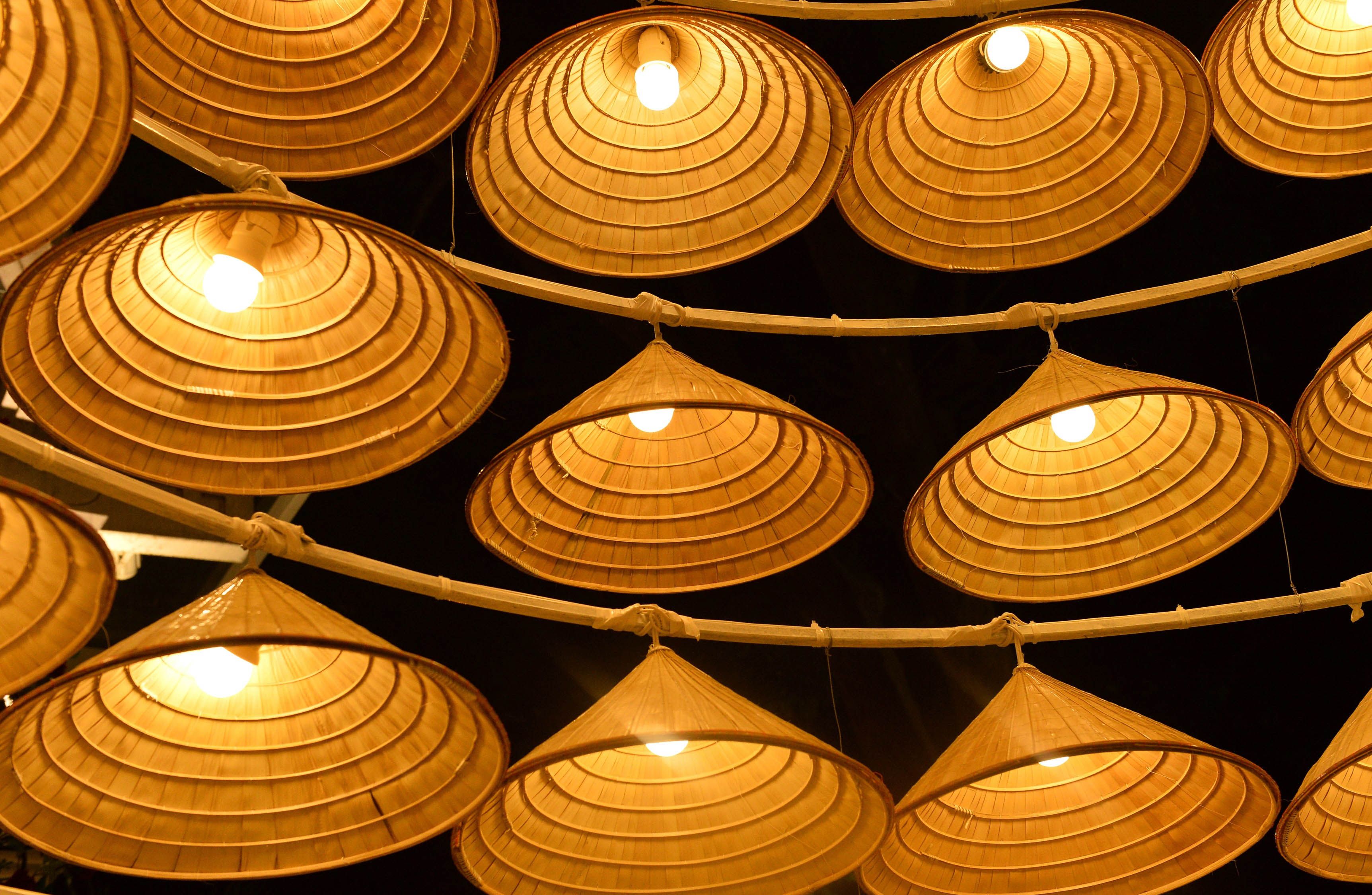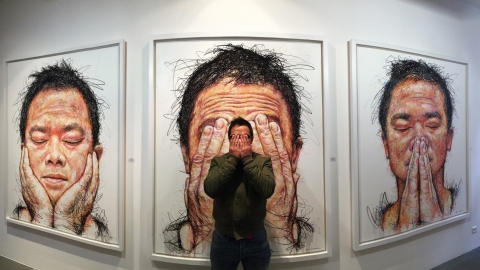Handicrafts from traditional craft villages are not only works of art, but also bear the mark of history, soul and love of people for their land. Join Travellive on a journey of discovery, learn more about the famous craft villages that have been around for generations, contributing to the unique culture of Hue.
Sinh Village - where folk paintings are preserved for over 400 years
Sinh Village, also known by its Chinese name Lai An, is located close to the banks of the Perfume River, near the junction with the Bo River. This is one of the ancient villages that appeared very early in Dang Trong, in the space of the ancient capital. Sinh Village is special because it is one of the few places that still preserves the traditional painting craft. In the past, Sinh Village was the cultural center of the capital and was often mentioned in O Chau Can Luc as a bustling trading center.
Existing since the 15th century, Sinh Village is famous for its traditional painting craft and wrestling festivals. Sinh Village paintings - a worship painting genre that has existed for more than 400 years - are a precious cultural heritage of the Vietnamese people and need to be preserved and protected.
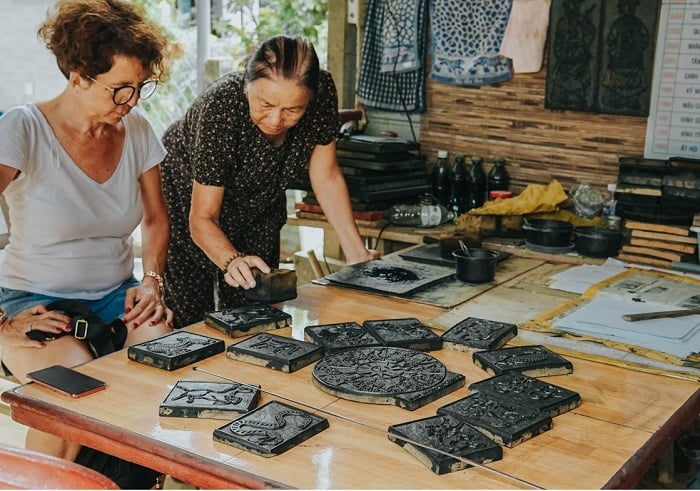
This is a traditional woodblock painting craft village for worship and serving religious needs, praying for peace and warding off bad luck.
Having the opportunity to visit Lang Sinh, a group of friends Nhat Linh (19 years old, Hue City) shared: "Through the introduction of the wife of artisan Ky Huu Phuoc - the last person holding the secrets of making Lang Sinh paintings, we learned that this profession has now faded away. Some young people have grown up and gone to work far away, and some have developed, so the number of customers who prefer this type of traditional painting is not much anymore."
Each painting here shows a distinct theme, divided into three main groups: paintings of characters, paintings of animals and paintings of objects, including images such as farmers, women, zodiac animals, insects, and wrestling. The themes of the paintings are often inspired by the beauty of daily life, festivals and the labor of villagers.
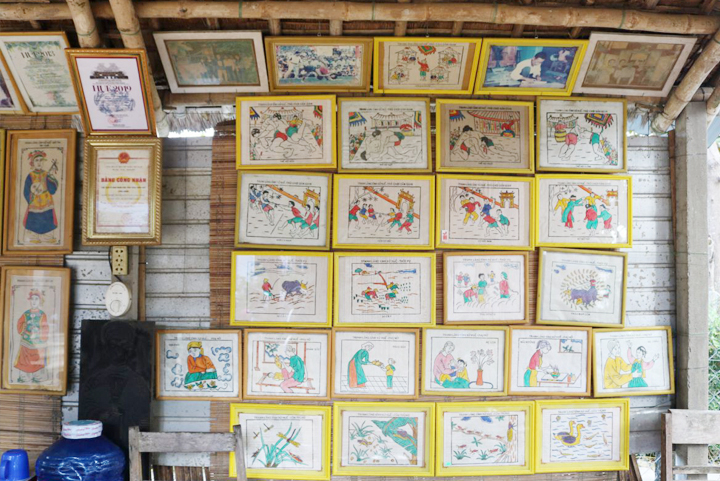
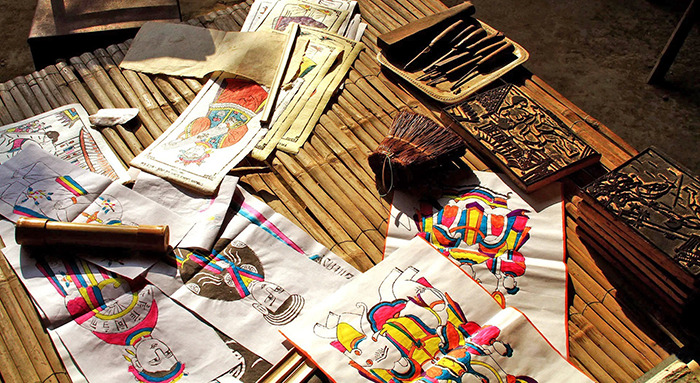
Mud paintings have about 50 themes, mainly reflecting social activities and ancient beliefs.
Nhat Linh added: "Only when I came here did I realize that to create a complete painting, I had to go through 7 stages, which is really a feat. Young people like us are lucky to be born and raised in a land rich in culture, where artisans still silently preserve traditions every day. Coming back to craft villages like this also fuels my love for Vietnamese culture, and the desire to spread it to more people."
Sinh village paintings not only have an important meaning in preserving and maintaining the village's famous traditional handicraft but also represent a part of the rural soul of Sinh village people, a spiritual heritage passed down from the fathers' generation. For tourists, the paintings are not only meaningful gifts but also bring special cultural beauty.
Tay Ho Village - the symbol of Hue's conical hat
The craft of making conical hats has existed in Hue for hundreds of years, with many craft villages such as Da Le, Phu Cam, Doc So, Trieu Tay, Kim Long, Sia... Among these, Tay Ho village - a prominent name because this is the place of origin of the famous poem hat. The village is located on the banks of the Nhu Y River, in Phu Ho commune, Phu Vang district, Thua Thien Hue province.
Residents here mainly make a living by making hats. The first poem hat was created around 1959 - 1960, by artisan Bui Quang Bac. Because of his love for poetry and artistic talent, he came up with the unique idea of attaching poems to the hat. The sweet, soaring verses are pressed between two layers of leaves, so they are very durable. When the hat is broken and can no longer be worn, Hue people still keep it to occasionally take it out to...read poetry.

"Whoever goes to the dreamy land of Hue, buy a conical hat as a gift..."
To create a beautiful hat, one must be careful from the leaf selection stage, the hat leaves must still retain their light green color, then the leaves must be ironed many times to make them flat and smooth. The stage of building and covering the leaves is the most difficult part of the hat making process, requiring skillful hands and high techniques to create a thin, clear hat that does not leak, and the layers of leaves must not overlap. This stage and the stitching are mainly done by highly skilled artisans, creating a soft, gentle stitching. In Tay Ho Village, only coconut leaves and palm leaves are used to make hats.

Conical hats of Tay Ho Village always have their own unique mark.
Le Hoa (27 years old, Hue City), a son of Tay Ho Village, confided: "I don't know exactly when the hat-making profession began, but since I was little, I have been familiar with the image of my grandmother and mother sitting and weaving hats every day. The conical hat from the house to the field, was 'upgraded' with embroidery threads, gradually becoming a symbol of Hue tourism."
Although there are many places in Hue that produce hats, hats from Tay Ho village have a special appeal. Hats from this village are more charming and sell easily. Just saying charming is not enough, we must also mention the verses imbued with the soul, love, and character of the people of the ancient capital and rarely are hats from any village as slender and elegant as this village's hats.
The conical hat is not only a commercial product but also a cultural symbol of Hue. "And there, images such as the Perfume River, Ngu Mountain or the natural beauty of the ancient capital often appear next to the poem on the hat. Tourists often buy it as a souvenir, and for those who live far away from home, looking at the images on the hat makes them miss their homeland so much," said Le Hoa.
Phuong Duc bronze casting village - a hundred-year-old fiery craft village

The Nine Urns, National Treasure of Hue
Bronze casting is one of the oldest and most famous traditional crafts in Vietnam. Craftsmen or families who practice this craft often live in a certain area, forming a bronze casting village. In Thua Thien Hue, the bronze casting village is located along the banks of the Perfume River, from Gia Vien Bridge to Long Tho, about 3km southwest of Hue city center, and has been around for more than 300 years.
Phuong Duc bronze casting village (also known as Duc village) was formed in the early 17th century. According to the genealogy of the Nguyen - Kinh Nhon family, the founder of the craft was Mr. Nguyen Van Luong, originally from Dong Xa village, Sieu Loai (present-day Bac Ninh province). Over the past 400 years, artisans in the village have used their talent and cutting-edge techniques to create sophisticated bronze products such as cups, incense, candlesticks, worship items and daily utensils. Duc village includes 5 hamlets: Truong Dong, Kinh Nhon, Bon Bo, Giang Dinh, Giang Tien, of which Kinh Nhon and Bon Bo are the two largest and most famous casting villages.
The generation of bronze casters in Hue left behind many heritage masterpieces in the tangible cultural treasure, from the Buddha statues at Linh Son Pagoda (Da Nang), Nha Trang Buddhist Academy, bronze cauldrons at the Imperial City (1659-1684), the bell of Thien Mu Pagoda (1710), the Nine Urns placed in front of The Mieu Temple (1835-1804), the Nine Divine Cannons placed in front of Ngo Mon Gate (1803-1804), the bell of Dieu De Pagoda (1846) and many other bronze worship items from "inside the palace to outside the palace" in Hue.
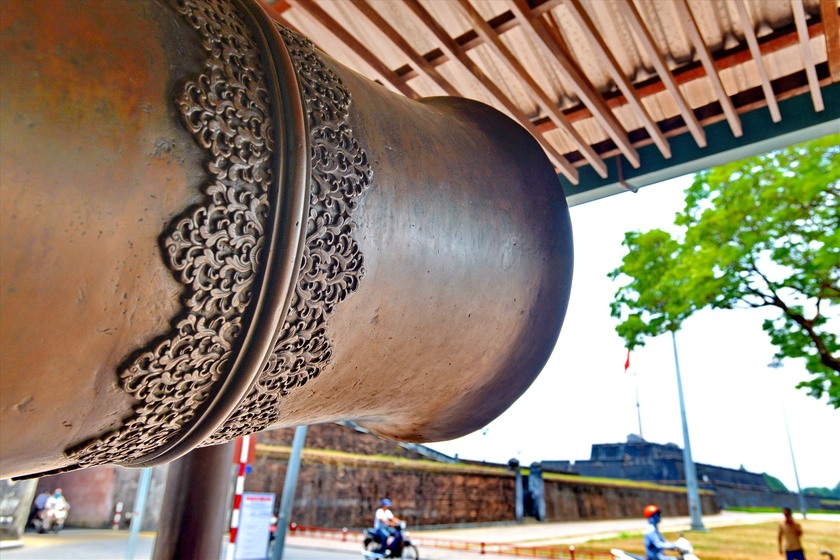
The elaborate pattern on the barrel of one of the cannons in the National Treasures Collection of Nine Cannons placed in front of Ngo Mon Gate, Hue
Nowadays, products from Duc village are popular because of the improvement of living standards, so owning a set of bronze worshiping items is no longer too difficult economically. At the same time, artisans have turned seemingly ordinary products into exquisite works of art for home decoration. Generation after generation of foundry workers have created very sophisticated bronze products, with high artistic value and many unique designs.
For Duc village, it is the pride of many generations, carrying the mission of preserving more than 400 years of development. Over time, Duc village has left a strong mark in the culture of the ancient capital. Tourists coming here not only visit famous relics, but also have the opportunity to explore Duc village with interesting characteristics.







